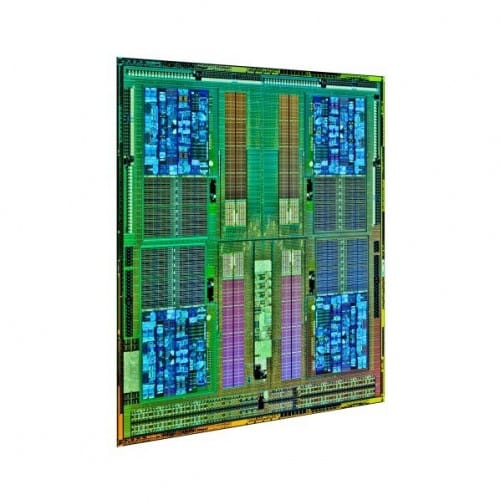We have all seen a glimpse into what the new AMD Piledriver architecture is capable of with our recent review of the Virgo Platform and Trinity APUs. This time around the graphics processor is out and the massive shared L3 cache is in as the only area not improved upon in this latest revision. Vishera is AMD’s proving ground to make or break their new approach to CPU design. After having some time with the new flagship processor, the FX-8350, I’ve learned some things about this new processor. I know you want to know if AMD is taking the right path so let’s get right to it!
Feature and Specification Highlights
The Trinity APUs were shifting to the AMD module design making the existence of the Piledriver architecture the updated feature. The FX-8350 is an update to the existing module design of Bulldozer which is why it is referred to as Enhanced Bulldozer. We will start right there and take a closer look at what makes Piledriver different.
As you can see there are a number of improvements across the board at the module level. There are improvements to the instruction sets with FMA3 and F16C ISA extensions, branch predictions, scheduling, L1 cache, hardware pre-fetcher, L2 cache responsiveness, and instruction execution. I do not have the Engineering expertise to explain what all that means individually, but I can at least simplify it for you: AMD has improved how fast the processors calculates, loads, and executes instructions.
Beyond the laundry list of improvements, the new Vishera CPUs are the same overall design you have with any AMD FX-series processor. In direct comparisons you will also notice an increase in default core speed moving from the Zambezi chips.
Vishera will launch as a family of four with a lower end 8 core (FX-8320), a 6 core (FX-6300) and a quad core (FX-4300) with accompanying drops in price from the top. The new flagship AMD FX-8350 at 4.0 GHz (4.2 GHz Max Turbo) will be priced at $199 MSRP. This puts the FX-8350 priced well below the initial release of the FX-8150.
But does the lower cost signal to anything other than a more competitive price? Let’s move on to testing to see if that is a factor or not.
Testing System
Our test system setup is very similar to the one we ran when we first reviewed the AMD’s first Bulldozer CPU about the same time last year. This should give us a good idea of just how far things have come with the new hardware.
Hardware:
- CPU: AMD FX-8350 “Vishera” 4.0 GHz (4.2 GHz Max Turbo) & AMD FX-8150 “Zambezi” 3.6 GHz (4.2 GHz Max Turbo)
- CPU Cooler: Noctua NH-D14
- Motherboard: GIGABYTE 990FXA-UD7 AM3+
- Memory: G.Skill RipjawX 2133 MHz (9-11-10-28) @ 1866 MHz (9-10-9-27)
- Graphics Card: AMD Radeon HD 6850 1GB Reference Card
- PSU: Antec HCP 850 Watt 80+ Gold
- SSD: Patriot Pyro SATA III MLC 60 GB (Sandforce 2281 controller)
- HDD: Seagate Barracuda XT 2 TB
- Case: Rosewill Thor V2
Software:
- Windows 7 64-bit Ultimate
- CCC 12.8
- AMD Overdrive 4.2.3
- PCMark07
- 3DMark11
- SiSoft Sandra 2012 SP5c
- wPrime
- 7-Zip
- Handbrake 0.9.8
- Alien Vs. Predator DX11 Benchmark
- Resident Evil 5 DX10 Benchmark
- Metro 2033
- Battlefield 3
- OCCT 3.1
- FurMark 1.9.1





